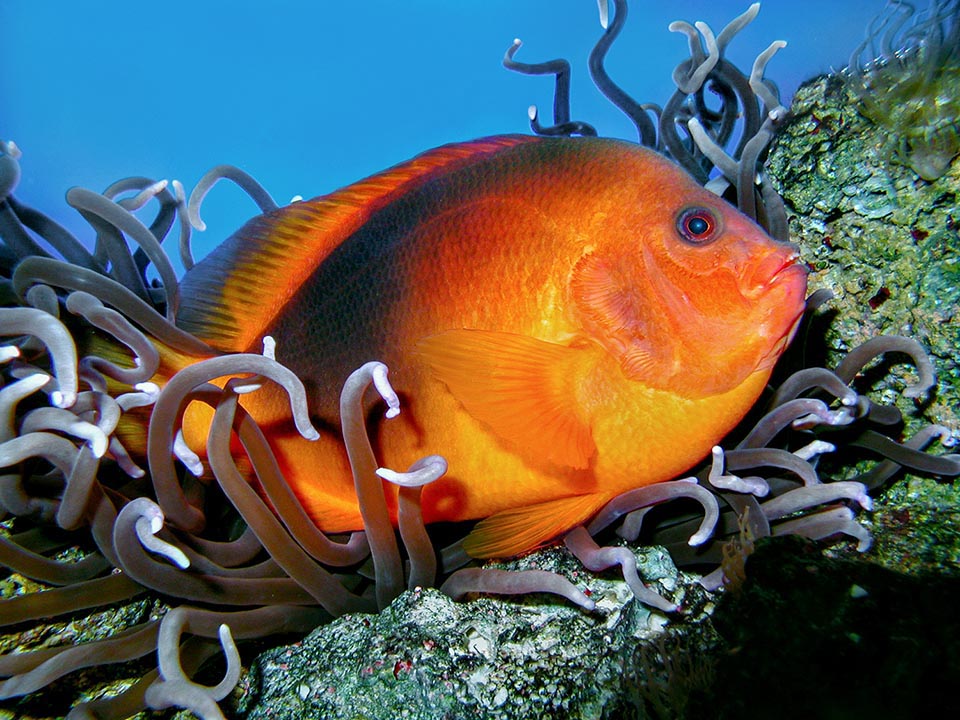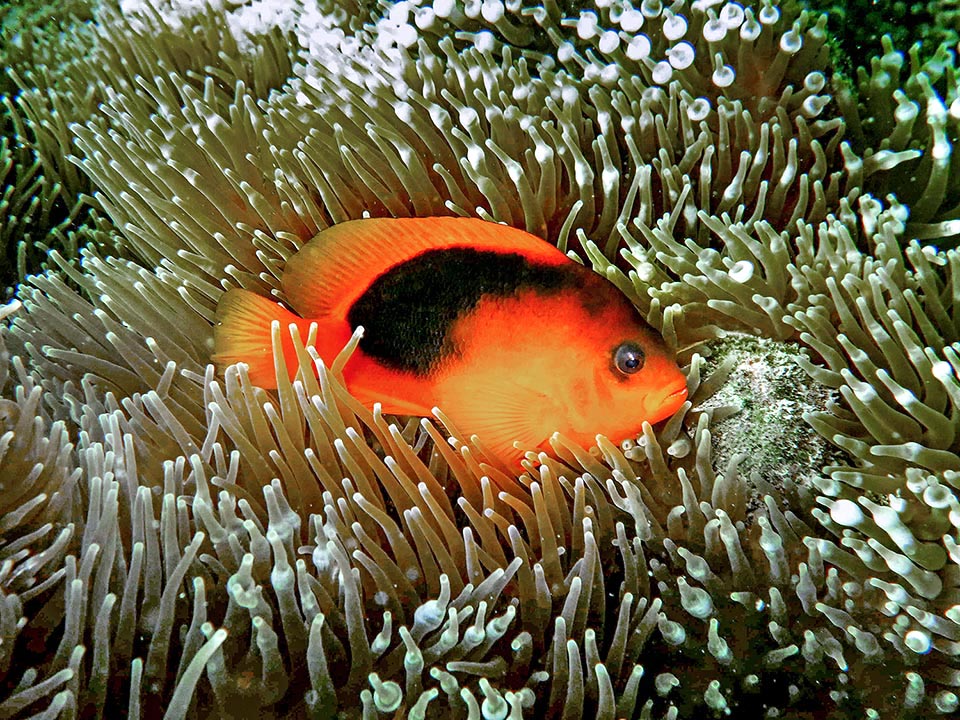Family : Pomacentridae

Text © Giuseppe Mazza

English translation by Mario Beltramini
The Saddle anemonefish (Amphiprion ephippium Bloch, 1790) belongs to the class of Actinopterygii, the ray-finned fishes, to the great order of the Perciformes, to the family of the Pomacentridae and to the colorful subfamily of the clownfishes, the Amphiprioninae.
The name of the genus Amphiprion comes from the Greek “amphi” = “on both sides” and “priön” = saw, because on both sides of the head the preoperculum and the suboperculum show an indentation shaped like a saw. The name of the species ephippium comes from the Greek “efippion” = saddle, due to the dark drawing, saddle-shaped, it has on the sides.
Zoogeography
It is present in the tropical waters of the Indian Ocean. It seems to be present along the coasts of Kenya and the Seychelles. To the east we find it then, indicatively, in India, the Andaman Islands, Thailand, Malaysia and Indonesia.
Ecology-Habitat
It lives up to 15 m of depth, where are at home its two symbiont actinias: the Entacmaea quadricolor and the Heteractis crispa.

Maximum 14 cm long, Amphiprion ephippium lives on the Indian Ocean eastern side at the boundary with the Pacific © Giuseppe Mazza
Morpho-physiology
It reaches the 14 cm of length with flat and tall body like Amphiprion clarkii and Amphiprion rubrocinctus.
The dorsal fin, unique as customary in the clownfishes, has 10-11 spiny rays plus 16-18 soft, the anal 2 spiny rays and 13-14 unarmed, whilst the pectoral ones, ample and roundish, count 18-20 soft rays. The livery is flame-red, with a more or less extended dark spot, similar to a saddle, on the sides.
Ethology-Reproductive Biology
Amphiprion ephippium nourishes of algae, small invertebrates and of the edible animal fragments passing close to it. Thanks to the protective mucus covering the scales, it is used since young to the poisonous tentacles of the two actinias hosting it and finds there, like all clownfishes, a safe haven. In exchange, it keeps clean the host, removing the parasites and the leftovers, and chases away the intruders who eat the tentacles.

It isn’t an endangered species, but lives only with two actinias species. Consequently, seeing its poor availability, is a rare guest in the aquaria © Jean Marie Gradot
It is a protandric hermaphrodite species: the males, while growing, can therefore when needed transform into females. In the communities present in the large actinias, we always note a dominant female, with the spouse and often some smaller males, that wait its death for moving up in rank. When this happens the surviving spouse takes the place of the female and changes sex for coupling with the bigger male of the group. The eggs are stuck on a rock, usually at the feet of the actinia. The male fecundates them and keeps the watch, ventilating them with the fins till the hatching, when the larvae disperse carried away by the currents.
Notwithstanding the undoubted beauty, it is a little frequent fish in the aquaria, because it has a reduced diffusion and seen its size it is expensive to despatch it, not to talk about the difficulty in furnishing, at the same time, one of the two symbiont anthozoans. In nature the populations can double their members in just 15 months and the fishing vulnerability index of the species is by sure low: only 10 on a scale of 100.
Synonyms
Amphiprion calliops Schultz, 1966; Lutjanus ephippium Bloch, 1790.
→ For general information about fishes please click here.
